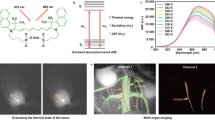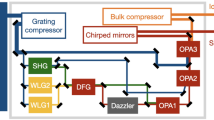Abstract
Mager and Blank1 have reported the synthesis of fluoropyruvic acid and claim that its infra-red spectrum shows an absorption band at 980 cm.−1, which they assign to the C—F stretching vibration. This frequency is outside the range normally assigned to this vibration2, and differs markedly from that suggested3 and afterwards found4 for this vibration in fluorocitric acid.
This is a preview of subscription content, access via your institution
Access options
Subscribe to this journal
Receive 51 print issues and online access
$199.00 per year
only $3.90 per issue
Buy this article
- Purchase on SpringerLink
- Instant access to full article PDF
Prices may be subject to local taxes which are calculated during checkout
Similar content being viewed by others
References
Mager, J., and Blank, I., Nature, 173, 126 (1954).
Bellamy, L. J., “The Infra-red Spectra of Complex Molecules”, 270(Methuen, 1954).
Peters, R. A., Wakelin, R. W., Buffa, P., and Thomas, L. C., Proc. Roy. Soc., B, 140, 497 (1952).
Peters, R. A., Wakelin, R. W., Rivett, D. E. A., and Thomas, L. C., Nature, 171, 1111 (1953).
Author information
Authors and Affiliations
Rights and permissions
About this article
Cite this article
THOMAS, L. Infra-red Absorption Spectrum of Fluoropyruvic Acid. Nature 175, 424–425 (1955). https://doi.org/10.1038/175424b0
Issue date:
DOI: https://doi.org/10.1038/175424b0



